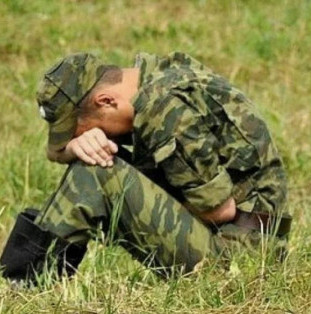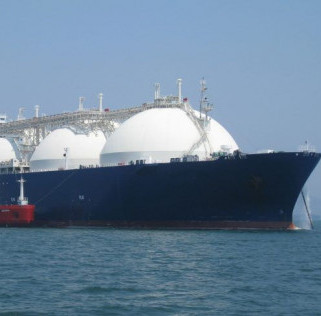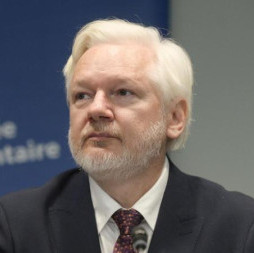Central Asia may either connect or divide simultaneously several civilizations; each of them is regarded by Washington quite reasonably as its geopolitical competitor. The northern part of the region is populated by the North Asian civilization represented by Russia, the eastern part – by the Far Eastern civilization represented by China, the southern part – by the Muslim civilization represented by many states. To split these civilizations and prevent their consolidation on the common anti-American and anti-Western platform is the most important task of Washington.
Simultaneously, Americans are interested in huge reserves of natural resources of Central Asia, which are incomparable with those in the Caucasus, for which Russia and Georgia but in fact Russia and the USA “crossed the swords” in the recent conflict. Because it was the USA that armed the Saakashvili’s regime and that inspired it to attack South Ossetia certainly knowing that Russian will come to help.
The processes currently occurring in Central Asia show that the United States endeavors to draw Mongolia as deep as possible into the orbit “of the global democratic revolutions”. And the gist of it is not only that Mongolia is one of the richest countries worldwide in terms of uranium reserves. The USA is primarily interested in its geopolitical location between China and the Russian Federation.
What is the USA doing? The amount of trade and investments in the Mongolian economy are increasing, i.e. the USA is building an economic basis for cooperation. Anti-Russian sentiments in the Mongolian society are latently fomented; the US-Mongolian military cooperation is gaining momentum.
The American influence in Mongolia is growing due to the fact that the leadership of this state in the complicated internal social, economic and political conditions has to keep balance between China, the USA and the Russian Federation. So far, the positions of Russia in Mongolia are rather strong. So far. But an idea to abandon the one-legged orientation towards Moscow is becoming more and more popular.
There are good reasons to suspect that Washington is doing its best to get into a focus of the Ulan Bator foreign politics. It is a goal of the US activities in recent years, which are aimed at generation of an influential political stratum in Mongolia biased towards the USA.
Evidently the developments in and around Mongolia are a challenge to Russia. This country especially in case of its ruling regime change (that was an aim of yet unsuccessful US efforts at the June parliamentary election) may become a link in the chain of “new democracies” emerging on the borders of Russia due to the US efforts. Thus chain now stretches from the Baltic to Caspian Sea, and may be extended to the Transbaikalia.
What should we do? In one word – do not sit on own hands. Experts believe that first of all it is imprudent and even dangerous in this context to postpone admission of Mongolia to the Shanghai Cooperation Organization (SCO), which this country is striving to.
The United States wants to see another country of Central Asia “a more prosperous and open region”. It is Kazakhstan. US State Secretary Condoleezza Rice justified the interest of Washington to this Central Asian country with this very intention when she was on a one-day visit to Astana on October 5. But it is muck for mugs. The United States is primarily interested in the geopolitical location of Kazakhstan between China and Russia and its energy resources.
Kazakhstan is a key partner in Central Asia also for the North Atlantic Alliance. It was stated by NATO Deputy Secretary General Claudio Bisogniero at his meeting with Kazakhstan Defense Minister D. Akhmetov in Astana on September 11. In turn, D. Akhmetov noted “positive dynamics and rather intensive strengthening of relations between Kazakhstan and NATO” and said that Astana believes that “the decision to conduct a forum on security of the North Atlantic partnership in Kazakhstan in 2009 is a very positive factor”, and attaches importance to a meeting of the NATO-Kazakhstan Council scheduled for this October in Brussels, which is expected to discuss the progress of the Individual Partnership Action Plan.
Let us recall that in 1992 Kazakhstan joined the North Atlantic Cooperation Council, which was transformed into the Euro-Atlantic Partnership Council in 1997. On May 27, 1994, Kazakhstan joined the Partnership for Peace. The agreed upon Individual Partnership Action Plan (IPAP) was approved on January 31, 2006. Joint activities of Kazakhstan and NATO under the IPAP are focused on the military cooperation. Today, Kazakhstan is the only state of the region that develops its relations with NATO on the individual model under the IPAP.
As from 2003, more than 6,000 NATO aircraft flew over Kazakhstan towards Afghanistan. The Kazakh authorities granted more than 80 clearances for transit landing of NATO aircraft on Kazakh aerodromes.
The aforesaid confirms that the USA and NATO are enhancing their influence in Central Asia, which states (Kazakhstan, Mongolia) more and more clearly demonstrate their aspiration to closely cooperate with America and North Atlantic Alliance. In this connection, it is evident that invigilance or errors in assessment of potential threats to Russia from this direction are intolerable, and underestimation of these threats may cost too much.
Experts point out that today Russia has rather strong positions in Mongolia. Skillfully using the mechanism of market prices Russia has managed to make the Central Asia hydrocarbons flow to the West via Russia but not via any alternative routes.
An important step forward has been made in the sphere of security. The recent CSTO Summit made a decision that the CSTO would establish its collective rapid deployment force in Central Asia on the basis of the armed forces of Russia, Kazakhstan, Uzbekistan, Tajikistan and Kirgizia.
But in the opinion of strategy analysts it is not enough. It is necessary to develop cooperation also in economic, political, humanitarian and information spheres. In one word, we should not sit on our own hands. If we fail to came, other will do, because the Russia’s competitors also do not sit on their hands.









